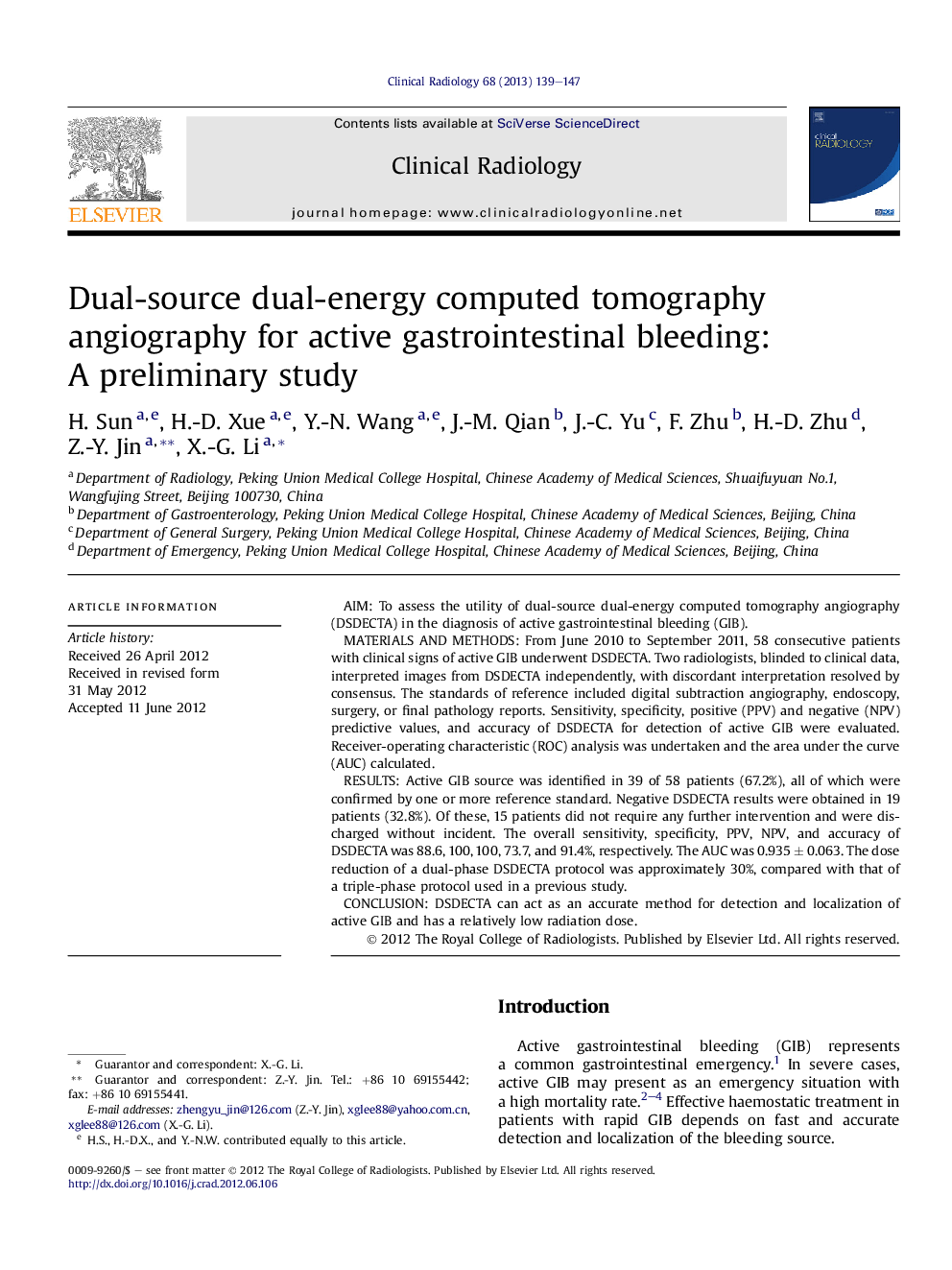| Article ID | Journal | Published Year | Pages | File Type |
|---|---|---|---|---|
| 3982147 | Clinical Radiology | 2013 | 9 Pages |
AimTo assess the utility of dual-source dual-energy computed tomography angiography (DSDECTA) in the diagnosis of active gastrointestinal bleeding (GIB).Materials and methodsFrom June 2010 to September 2011, 58 consecutive patients with clinical signs of active GIB underwent DSDECTA. Two radiologists, blinded to clinical data, interpreted images from DSDECTA independently, with discordant interpretation resolved by consensus. The standards of reference included digital subtraction angiography, endoscopy, surgery, or final pathology reports. Sensitivity, specificity, positive (PPV) and negative (NPV) predictive values, and accuracy of DSDECTA for detection of active GIB were evaluated. Receiver-operating characteristic (ROC) analysis was undertaken and the area under the curve (AUC) calculated.ResultsActive GIB source was identified in 39 of 58 patients (67.2%), all of which were confirmed by one or more reference standard. Negative DSDECTA results were obtained in 19 patients (32.8%). Of these, 15 patients did not require any further intervention and were discharged without incident. The overall sensitivity, specificity, PPV, NPV, and accuracy of DSDECTA was 88.6, 100, 100, 73.7, and 91.4%, respectively. The AUC was 0.935 ± 0.063. The dose reduction of a dual-phase DSDECTA protocol was approximately 30%, compared with that of a triple-phase protocol used in a previous study.ConclusionDSDECTA can act as an accurate method for detection and localization of active GIB and has a relatively low radiation dose.
